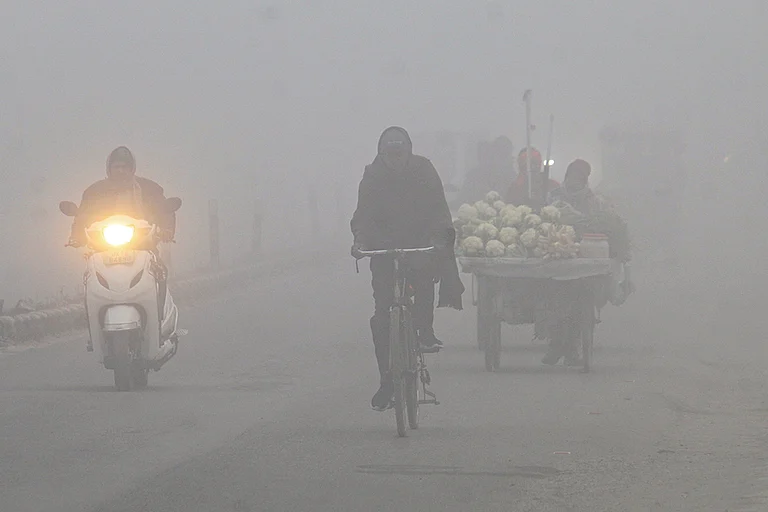A massive sinkhole, resembling a huge crater, suddenly appeared on a road in Delhi's Rohini area on Sunday. The alarming development occurred as heavy rains continued to lash the national capital, leading to the cave-in of the road surface. The sudden formation of the sinkhole necessitated traffic diversions, and authorities swiftly erected barricades to prevent any accidents or further damage. The incident coincided with Delhi witnessing a record-breaking rainfall of 153 mm in a single day, marking the highest precipitation in four decades.
Understanding Sinkholes: Nature's Mysterious Phenomenon
Sinkholes, also known as snake holes, swallow holes, or dolines, are natural depressions or holes that emerge on the Earth's surface. They are primarily caused by a geological process called karstification, which occurs when soluble bedrocks such as limestone or dolomite are dissolved over time. While sinkholes can develop in various environments, they predominantly manifest in carbonate rocks or evaporitic rocks. The absence of external surface drainage leads to the accumulation of water within the sinkhole, gradually dissolving the surrounding rock.
Sinkholes can vary in size, ranging from small depressions to massive chasms measuring over 100 meters in depth. Their shapes also vary, with some resembling shallow saucers or bowls, while others exhibit more vertical formations. Certain sinkholes even contain water, forming ponds within limestone formations. Despite their slow formation, sinkholes often lack visible surface indications, making their occurrence unpredictable and potentially hazardous, especially in urban areas.
Causes of Sinkhole Formation: Natural and Human Factors
Sinkholes can arise from a combination of natural and human-induced factors. Understanding these causes can help identify areas prone to sinkhole formation and enable proactive measures to mitigate risks.
Effect of Water: Groundwater plays a dominant role in the formation of sinkholes. They frequently occur in karst terrains, characterized by soluble bedrocks. Over time, these bedrocks are dissolved by underground water, creating voids and caverns beneath the surface. As the surface layer weakens, it eventually collapses, giving rise to sinkholes. Furthermore, heavy rainfall following a drought or changes in the hydrologic system can exert immense pressure on the ground, leading to sinkhole formation.
Naturally-Occurring Cracks: Natural cracks and voids beneath the surface are gradually hollowed out by water erosion. The resulting erosion weakens the surface cover, which eventually collapses, revealing the underlying cavern.
Human Activities: Human actions can contribute to the development of sinkholes. Activities such as drilling new water wells, excessive extraction of groundwater, the creation of artificial surface water bodies, diversion of surface water, mining, construction, improper soil compaction after excavations, broken water or drainage pipes, and heavy traffic can all potentially trigger sinkholes.
Induced Earthquakes: Seismic activity resulting from industrial operations, mining, or hydraulic fracking can destabilize the rock structure below the surface. These induced earthquakes may lead to sinkhole formation, particularly in areas with weak underlying rocks.
Are sinkholes really a problem?
Sinkholes pose a significant threat in urban and suburban areas, as they can cause destruction to highways and buildings, while also raising concerns about water quality. The sudden collapses of sinkholes can wreak havoc on infrastructure, endangering public safety. Moreover, during such events, surface waters can infiltrate aquifers, the underground sources of drinking water, leading to contamination and the need for protective measures to preserve water quality standards.


























